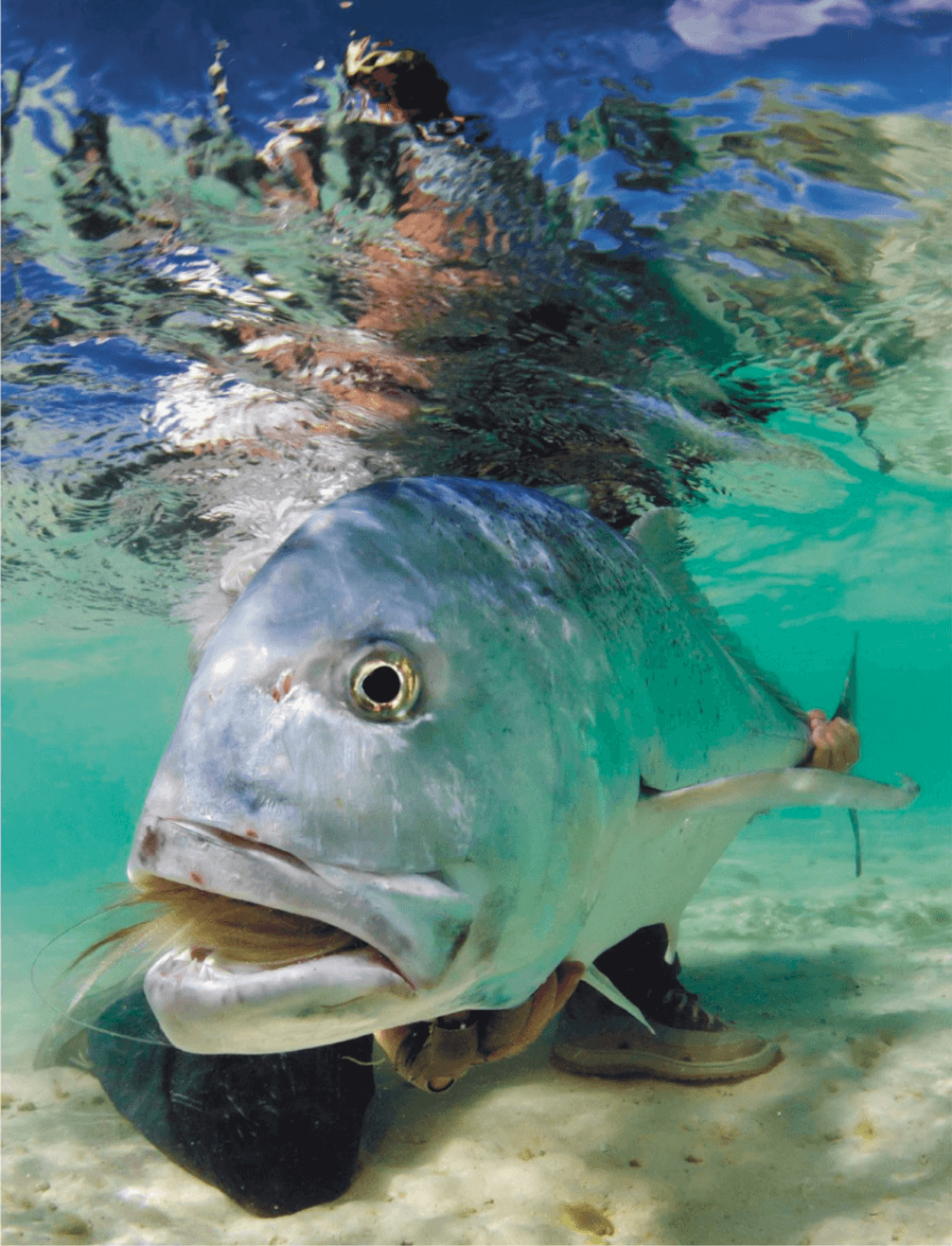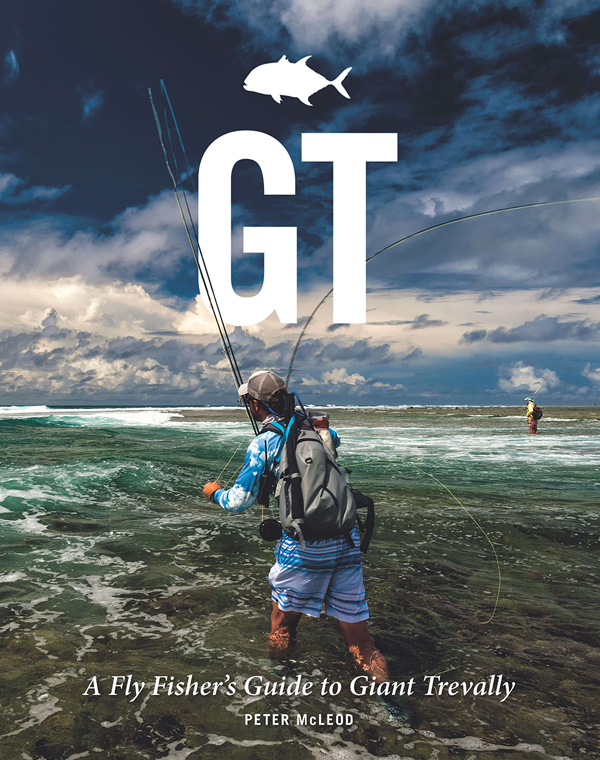Hunt Giant Trevally (GT) on the Fly
What’s the next fish species you’re hunting? If you’re up for a challenge, we highly recommend the Giant Trevally. This fish has become a premier target for fly fishing fanatics everywhere to pursue.
Here’s what an angler should know before embarking on a trip to land a GT…
An incredibly strong, ferocious and aggressive reef fish. It is a large member of the jack family and is also known as the Giant Kingfish, Pacific Jack Fish, Goyan Fish, Lowly Trevally, Barrier Trevally, Ulua in Hawaii, Mamulan in the Marianas, Rōnin-aji in Japan and just plain GT for short. The Giant Trevally is similar in shape and appearance to a number of other large jacks and trevallies, having a large profile secondary to its muscular compressed oval body. GT’s are normally a silvery color with occasional dark spots although males may be black once they mature. The fish grows relatively fast, reaching sexual maturity with a length of approximately 60 cm at three years of age. With a documented maximum length of greater than 5.5 feet (~2 meters) and a weight of 175 lbs. (80kg), fish this big (or even close to this size) are extremely rare, with the species only occasionally seen at lengths greater than 3 feet (~0.8 meters). The Hawaiian Islands seem to have the largest fish, so if you are aiming for a trophy….Aloha, GTs over 100 lbs. (45 kg) are there.
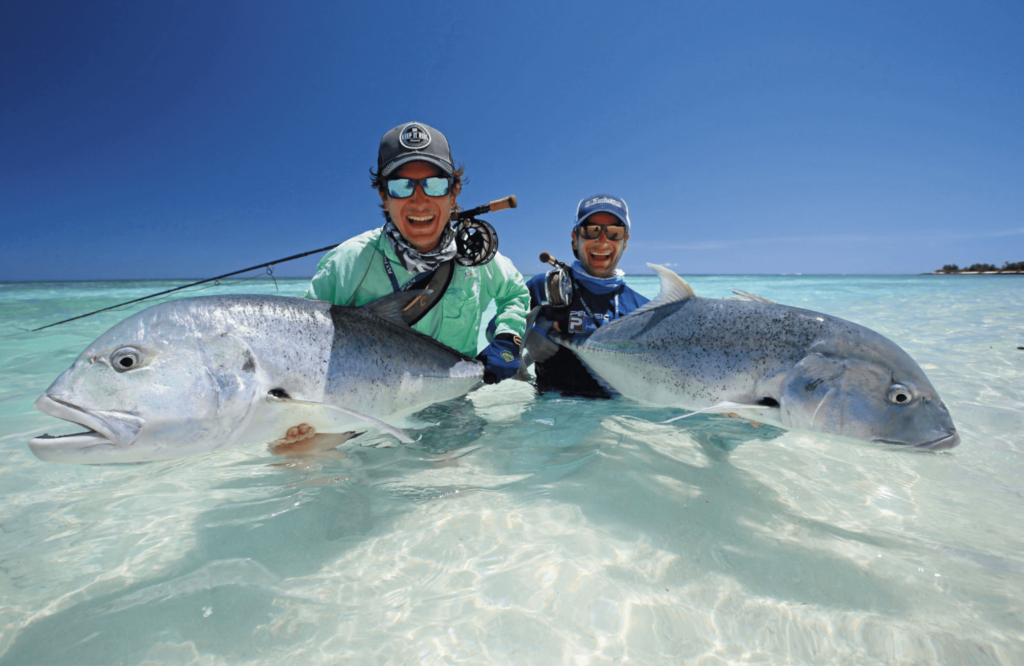
Keep in Mind: Only three GTs over 100 lbs. (45 kg) from non-Hawaiian destinations have been reported to the IGFA.
GT’s Geography: The Giant Trevally is distributed throughout the tropical waters of the Indo-Pacific. They range southward from South America in the west to Hawaii in the east, as far north as Japan and southern Australia. They range along the coasts of three continents and many hundreds of smaller islands and archipelagos in the Indian Ocean.
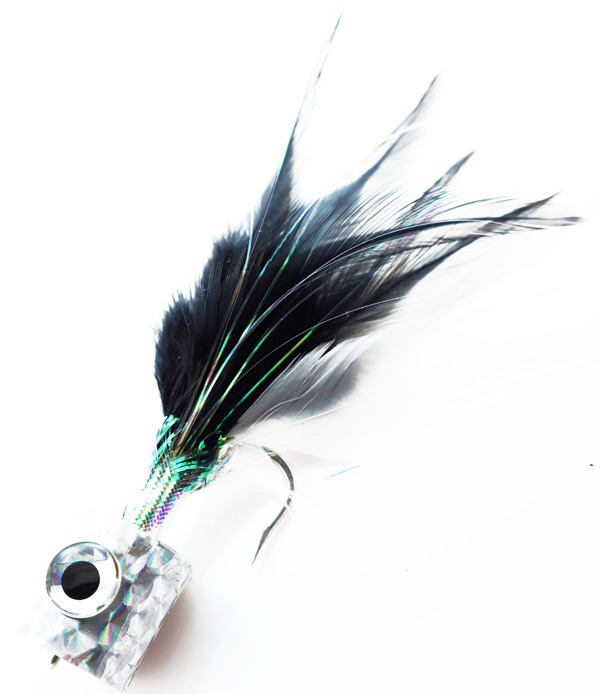 GT’s Location Preference: GT’s inhabit a wide range of ocean environments as well as some non-marine environments. They usually start as juveniles in the safety of estuaries, shallow bays and lagoons, as most species do. These juveniles are also well known to live in waters of very low salinity such as coastal lakes and upper reaches of rivers. They tend to prefer brackish waters similar to baby Tarpon and Jack Crevalles. GT’s move to deeper reefs, offshore atolls, large embayment’s, bombora or drop-off channels as they become adults and realize their speed and power.
GT’s Location Preference: GT’s inhabit a wide range of ocean environments as well as some non-marine environments. They usually start as juveniles in the safety of estuaries, shallow bays and lagoons, as most species do. These juveniles are also well known to live in waters of very low salinity such as coastal lakes and upper reaches of rivers. They tend to prefer brackish waters similar to baby Tarpon and Jack Crevalles. GT’s move to deeper reefs, offshore atolls, large embayment’s, bombora or drop-off channels as they become adults and realize their speed and power.
How to Hunt the Flats King:
Keep in Mind: You have a GT on the line? Prepare yourself, it’s time for battle against the ferocious beast. They know their domain, are incredibly strong and they will do anything to get off your line, except jump.
Most of the time, you will be chasing solitary GT’s on the flats. They are not difficult to locate since they aren’t quiet as they are pushing a lot of water. Solitary hunters have an advantage over pack hunters when you throw a fly at them because they are the only hunter there to attack. They will aggressively assault your fly and you will know that there is a GT at the end of your line. Some larger and bolder GT have been seen eating a lobster head first while it’s in a defensive stance. So you can image what they would do to a fleeing fly.
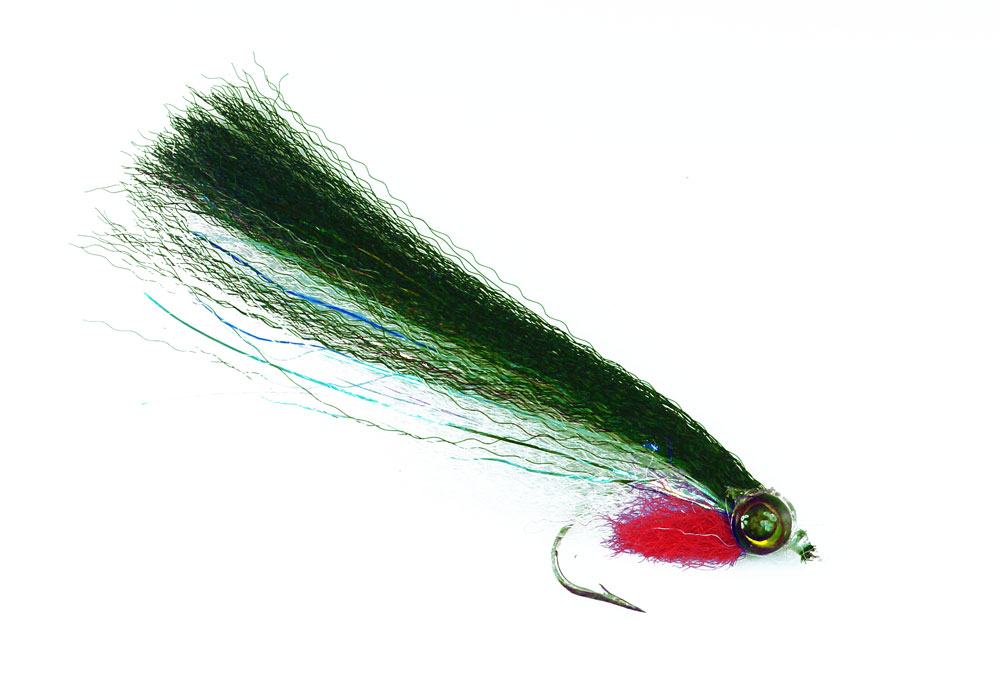 The name of the game is creating the illusion of distress. If you cast a fly into the range of a GT, strip it effectively making lots of noise thus creating the impression that it is a desperate baitfish fleeing for its life, you will probably be successful. They are there to eat and you should be able to entice one to attack. That being said, they aren’t injudicious so it might take some convincing for them to come on to the flat which is why many anglers will just chum for them..
The name of the game is creating the illusion of distress. If you cast a fly into the range of a GT, strip it effectively making lots of noise thus creating the impression that it is a desperate baitfish fleeing for its life, you will probably be successful. They are there to eat and you should be able to entice one to attack. That being said, they aren’t injudicious so it might take some convincing for them to come on to the flat which is why many anglers will just chum for them..
Once hooked it is absolutely essential to high stick, which means holding your fly rod straight up in the air allowing maximum clearance of line since you have just pissed off one tough fish. The run of a GT is not like the run of a bonefish. They move in a zigzag motion and frequently turn around to come straight toward you which is pretty much the opposite of the blistering straight line sprint of the bonefish away from you.
GT is no doubt the strongest flats fish on the planet. If you get to fish for and land it, reminisce and treasure the experience.
It’s a difficult species on many levels.
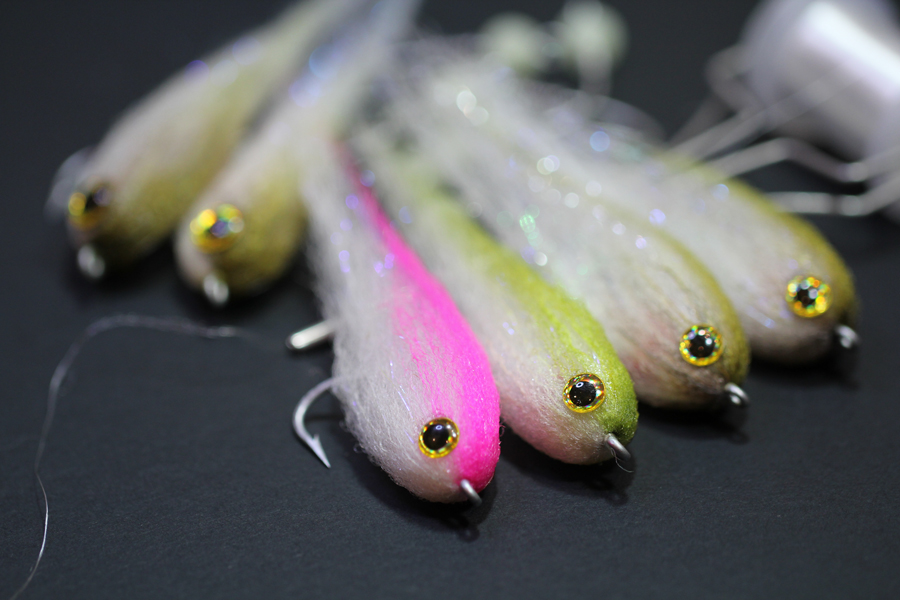 Recommended Flies for GT:
Recommended Flies for GT:
Baitfish imitators, but our friends in Australia really like poppers.Depending on size of fish you can tie them on hooks from a 1-0 to a 5-0.
Most Big Poppers (Yellow/green Blue/White & Pink/White)
Trey Comb’s Sea Habit (for almost any big salt water fish)
Enrico Puglisi’s Peanut Butter (Black/White, gray/White)
Any Glass Minnow
Some recommended reading is the latest book from Peter McLeod on fishing for GT. It is a very well written book and has probably already become “the” book to read on fly fishing for giant Trevally.
fly fishing magazine
tail fly fishing magazine

